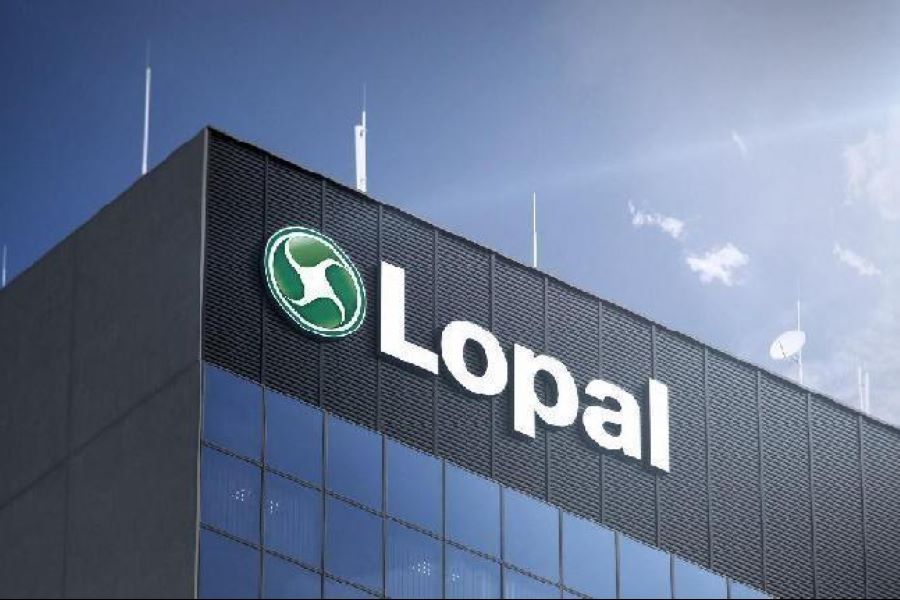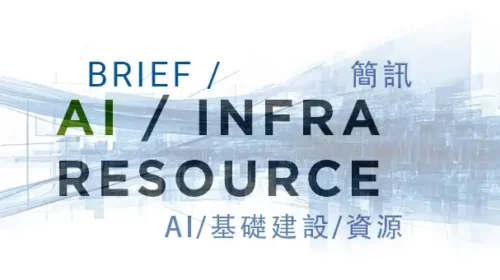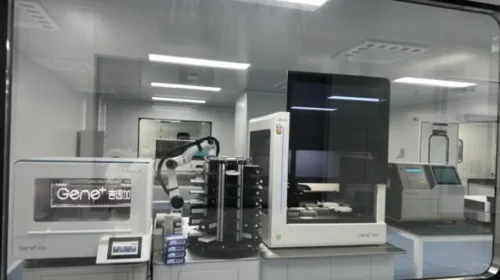Lopal Tech seeks cash after losses balloon with lithium price plunge

The lithium iron phosphate battery cathode material maker, which was listed in Shanghai in 2017, is seeking to raise funds with a second listing in Hong Kong
Key Takeaways:
- Lopal Tech recorded a huge 1.5 billion yuan loss last year due to plummeting prices of lithium carbonate, but is expected to return to profitability this year
- The company, whose Shanghai-listed shares are down by half over the past year, is making a second attempt to list in Hong Kong
By A. Au
As goes the price of lithium carbonate, so goes the fate of companies that depend on the material that’s become a key ingredient for the batteries powering the new energy revolution.
That describes life these days for Jiangsu Lopal Tech Co. Ltd. (603906.SH), a leading maker of cathode materials for lithium iron phosphate batteries. Lopal had a field day when lithium prices were soaring in 2022, pocketing 1.03 billion yuan ($145 million) in profit that year. But what goes up often comes down, and Lopal crashed when prices of this “new energy gold” plummeted last year, ending up with 1.51 billion yuan loss that year.
Stressed with such a huge shortfall, even as it needs new funds to keep expanding its capacity, Lopal turned to global investors by filing to list on the Hong Kong Stock Exchange at the end of 2023. That effort ultimately failed, but now the company has launched a second attempt with a new listing application last week, hoping to join the ranks of the companies with dual listings in both Hong Kong and on China’s domestic A-shares market, often called A+H.
Founder Shi Junfeng set up Lopal in 2003 after years of toiling in China’s automotive industry. His original company mainly dealt in lubricants and other automotive chemicals, and later expanded its portfolio to diesel engine exhaust treatment fluid, coolant, automotive maintenance products and daily-use chemicals.
But growth for his company slowed after Shi took it public on the Shanghai Stock Exchange in 2017. To jumpstart things, he made a big bet on the future by tying his fortunes to China’s then-fledgling electric vehicle (EV) market. In May 2021, Shi set up Changzhou Liyuan New Energy Technology, a maker of cathode materials for the lithium iron phosphate batteries that power many of today’s EVs.
Lopal went on to enjoy a golden period in 2021 and 2022 as demand soared for its lithium materials, with the company’s revenue from lithium materials reaching 1.88 billion yuan in 2021, then jumping more than fivefold to 12.24 billion yuan the next year. That helped the company net about 14.07 billion yuan in total revenue for 2022, up about 2.5 times from 2021, with a hefty profit of 1.03 billion yuan. Its share price in Shanghai also touched a record high of 70.58 yuan in October 2021, up more than tenfold over less than a year and a half.
Lopal’s revenue surge tracked its biggest customer, leading Chinese lithium battery maker CATL (300750.SZ), which contributed 1.16 billion yuan to Lopal’s revenue in 2021, then 7.49 billion yuan in 2022 and 2.65 billion yuan last year, accounting for 28.6%, 53.2% and 30.3% of its revenue in those three years, respectively. Lithium battery materials have also become Lopal’s main breadwinner, growing from 46.3% of its revenue in 2021 to 87% in 2022, before falling back to 77.4% last year.
But those heady days slipped into the rear-view mirror last year, as growth of China’s domestic EV market slowed and lithium carbonate prices crashed by nearly half from a peak of about 482,000 yuan per ton in 2022 to 272,000 yuan last year. At the same time, oversupply of lithium iron phosphate battery cathode materials due to slowing demand for EVs dragged down the price of Lopal’s products, from an average of 128,700 yuan per ton in 2022 to just 62,500 yuan in 2023.
Making matters worse Lopal bought most of the lithium carbonate, the main raw material used to make its products, for last year’s production when prices were at peak levels. That lag factor led Lopal to record an inventory impairment loss provision of 550 million yuan last year.
Growing debt
At the same time, the company’s debt ballooned over the last three years as it built up its operation, with its fixed-rate bank borrowings rising from 1.76 billion yuan in 2021 to 7.91 billion yuan by the end of last year. The company was also cash flow negative in 2021 and 2022, recording net cash outflow from operating activities of 820 million yuan and 1.86 billion, respectively, in those two years. It turned a corner last year when it became cash flow positive with a net inflow of 1.41 billion yuan. But it still recorded a net cash outflow from investing activities last year of 2.64 billion yuan.
Lopal has raised 9.4 billion yuan over the past three years to continue increasing its capacity. It intends to use funds from the Hong Kong IPO for similar purposes, including the second phase of a plant in Indonesia, as well as for a new lithium manganese iron phosphate production line in the city of Xiangyang in Central China’s Hubei province.
Amid its recent suffering, the company got a bit of good news in February this year when one of its subsidiaries signed a long-term supply agreement with leading South Korean battery maker LG Energy Solution worth more than 7 billion yuan. LG Energy Solution and its affiliates have committed to purchasing 160,000 tons of Lopal’s lithium materials between 2024 and 2028, helping the company expand its reach beyond its home China market.
Lopal’s first-quarter financial results, announced by its Shanghai-listed company in April, told a story of improving conditions for the company. Its revenue still fell 29.2% year-on-year to 1.47 billion yuan for the three months, but its net loss narrowed sharply, by about 65%, to 78.04 million yuan.
Investment bank CICC said the improving performance was the result of the fading impact of asset impairment losses, combined with the addition of new production capacity with higher efficiency. But it still downgraded its earnings forecast for Lopal by 22.3% to 351 million yuan for this year, and reduced next year’s forecast by a similar 26% to 730 million yuan. That translated to a price-to-earnings (P/E) ratio of 15.2 for the company’s A-shares this year, and 7.3 times next year.
While its prospects appear to be improving, big recent losses for its Shanghai stock could make Lopal’s new Hong Kong shares a tough sell to local investors. That said, the company might benefit from improving sentiment among Hong Kong investors, amid a recent rally that has seen the benchmark Hang Seng Index rise 25% from a low in late January.
To subscribe to Bamboo Works free weekly newsletter, click here





